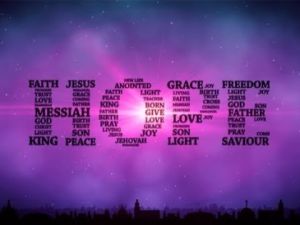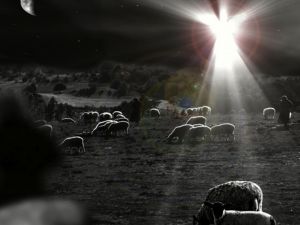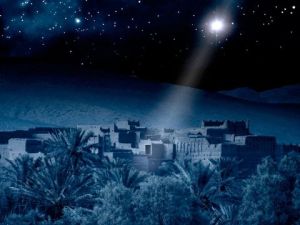A MESSAGE
FROM THE PRESIDENT
OF ST. MARK'S
CONSISTORY
DECEMBER
2025



A MESSAGE
FROM THE PRESIDENT
OF ST. MARK'S
CONSISTORY
DECEMBER
2025

Mark 6:31-32 "Then Jesus said, 'Let's go off by ourselves to a quiet place and rest awhile.'"
The season of Advent is here and before we know it, we will be celebrating Jesus' birth. My last article focused on the second week of Advent and preparation. I asked people to move the focus off ourselves during Advent and focus on what Jesus would want us to do, help others.
Well, here's my second request for Advent. Now that you have thought of ways to focus on others during Advent, I want you to add back in self-care. Taking care of yourself is just as important as taking care of others. If you are not at your best, you cannot provide your best to others. Re-read the above Bible verse. Even Jesus took time to find a quiet place to rejuvenate. This verse is from when Jesus was on the boat with his disciples and there were so many people around, they did not have time to even eat. Even God took time to rest on the seventh day.
God is all for self-care. He not only wants us to eat right, exercise, get enough sleep; God wants us to take care of our spiritual needs. So, this Advent season make sure you set aside time each day to sit in the quiet, read the Bible, pray, and listen to God speak. By doing this you will not only grow stronger spiritually, but you will become closer to God. When we have that strong connection with God and truly take time to read His word, pray and listen, we can truly accomplish all He asks us to do.
Blessings,
Heather Stone



"No matter who you are or where you are on life's journey,
you are always welcome here."
ADVENT/CHRISTMAS

INTRODUCTION
As the days grow shorter, we enter a period of waiting and preparation. This is the season of Advent in which we await the coming birth of Jesus. Advent is also the first season of the liturgical year and is a joyous and hopeful season in the church year. The season of Advent begins on the fourth Sunday prior to Christmas Day. The actual season of Advent can last from 22-28 days. When Christmas Eve falls on a Sunday, it is the last Sunday of Advent.
The word advent comes from the Latin term "adventus" meaning "arrival" or "coming," particularly the coming of something having great importance. Advent is both a time of joy-filled celebration of the birth of the Lord and a preparatory period for meditation.
Although not specifically mentioned in the Bible, Advent is inspired by scripture. The prophet Isaiah mentioned numerous times the prophecy of the birth of Jesus.
ISAIAH 7:14 (NIV)
Therefore, the Lord himself will give you a sign: The virgin will conceive and give birth to a son, and will call him Immanuel.
ISAIAH 9:6-7 (NIV)
"For unto us a child is born,
to us a son is given,
and the government will be on his shoulders.
And he will be called
Wonderful Counselor, Mighty God,
Everlasting Father, Prince of Peace.
of the greatness of his government and peace
there will be no end.
He will reign on David's throne
and over his kingdom,
establishing and upholding it
with justice and righteousness
from that time on and forever.
The zeal of the Lord Almighty
will accomplish this."
ISAIAH 11:1 (NIV)
"A shoot will come up from the stump of Jesse; from his roots a Branch will bear fruit."
Isaiah foretold the birth of Jesus centuries before it occurred.

THE ORIGINS OF ADVENT
It is believed that Advent began sometime after the 4th Century as a time of preparation for Epiphany. Epiphany celebrates the visit of the wise men.
Later in the 6th Century, Advent came to be associated with the coming of Jesus.
By the Middle Ages, four Sundays had become the standard of the Advent season.




ADVENT SYMBOLS AND CUSTOMS
Perhaps one of the most important Advent symbols and customs is the Advent Wreath. The Advent Wreath is a common symbol of the liturgical season. Lighting an Advent Wreath is a custom that began in sixteenth-century Germany. The Advent Wreath is a circle of evergreen branches or garland with four or five candles arranged on the wreath. During the season of Advent, a candle on the wreath is lit each Sunday as a part of the Advent service. The traditional Advent Wreath consists of three dark blue candles and one pink candle set in the wreath. Often a single, larger white candle is placed in the center of the wreath.
The color of the Advent candles serve as a way to light the way to the birth of Jesus.
THE THEMES OF THE FOUR SUNDAYS OF ADVENT



The first dark blue candle on the Advent Wreath symbolizes HOPE -- the first Sunday of Advent leads us to anticipation of the birth of Jesus. Sometimes called the "Prophecy Candle" this candle reminds us of Isaiah's foretelling the birth of the Christ Child and that all of the promises God gave us in the Old Testament would be fulfilled the Christ Child's birth.



The second dark blue candle on the Advent Wreath symbolizes PEACE -- the second Sunday of Advent. It is sometimes referred to as the "Bethlehem Candle" and reminds us of the journey of Joseph and Mary from Nazareth to Bethlehem before she gave birth to the Christ Child. The candle also reminds us that after division, destruction, abd dispersion of the kingdom in the Old Testament, there might be peace on Earth.



The third candle (pink) of Advent symbolizes JOY -- the third Sunday of Advent. Sometimes the candle is referred to as the "Shepherd's Candle." As we approach Christmas, our joys grows and takes us back to the joyful anticipation of the shepherds who travelled to see the Christ Child inthe town of Bethlehem.



The fourth candle (dark blue) symbolizes LOVE -- the fourth Sunday of Advent. The candle is sometimes referred to as the "Angel's Candle." The candle represents the ultimate love of God that he might send his only Son for us and leads us to eagerly await the New Kingdom of God on Earth. It also reminds us of the message of the angels on the first Christmas -- "Peace on Earth, Good Will Toward Men."



The white candle in the middle of the Advent Wreath is lit on Christmas Eve. It is called the "Christ Candle." The candle represents the life of Christ and symbolizes purity.


